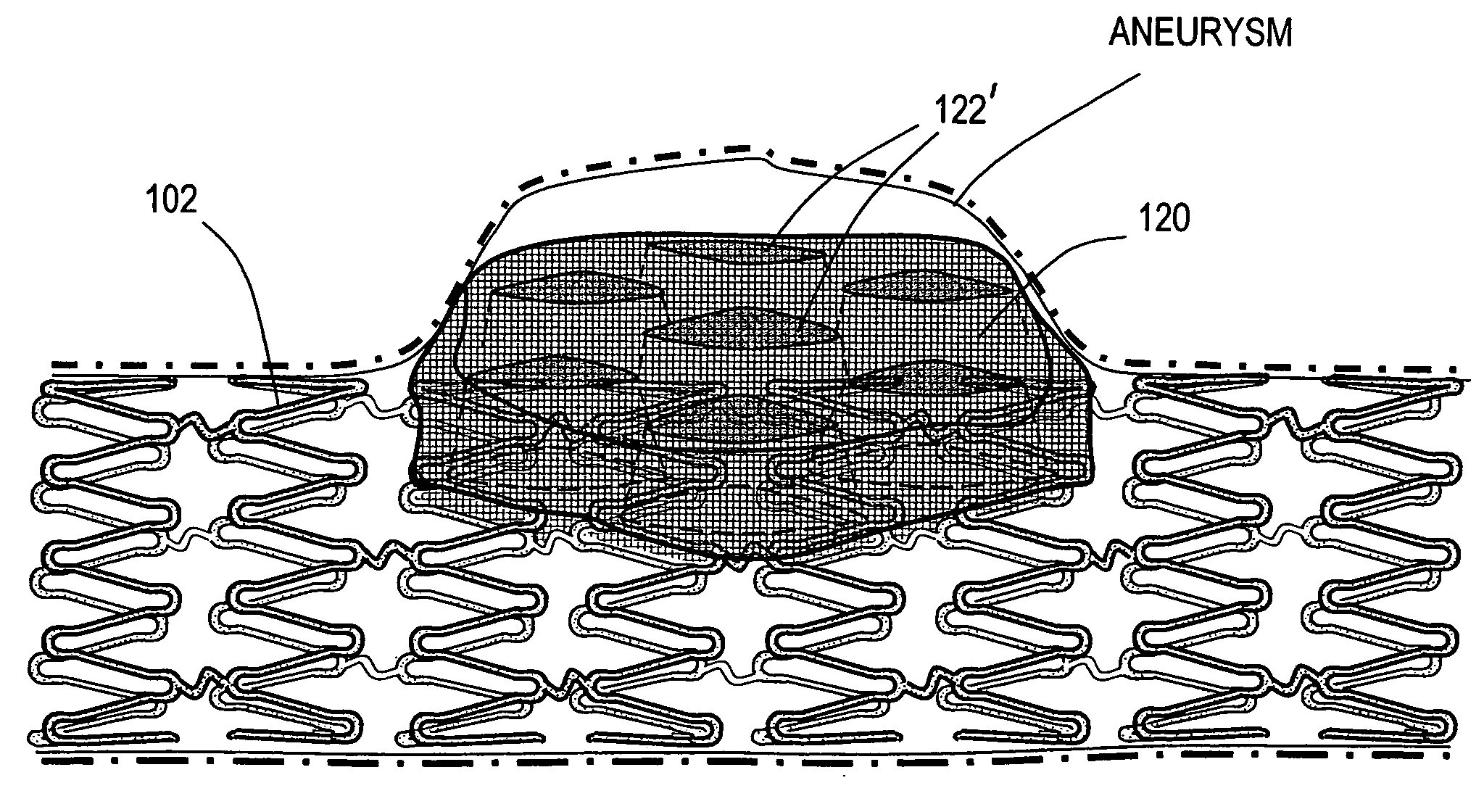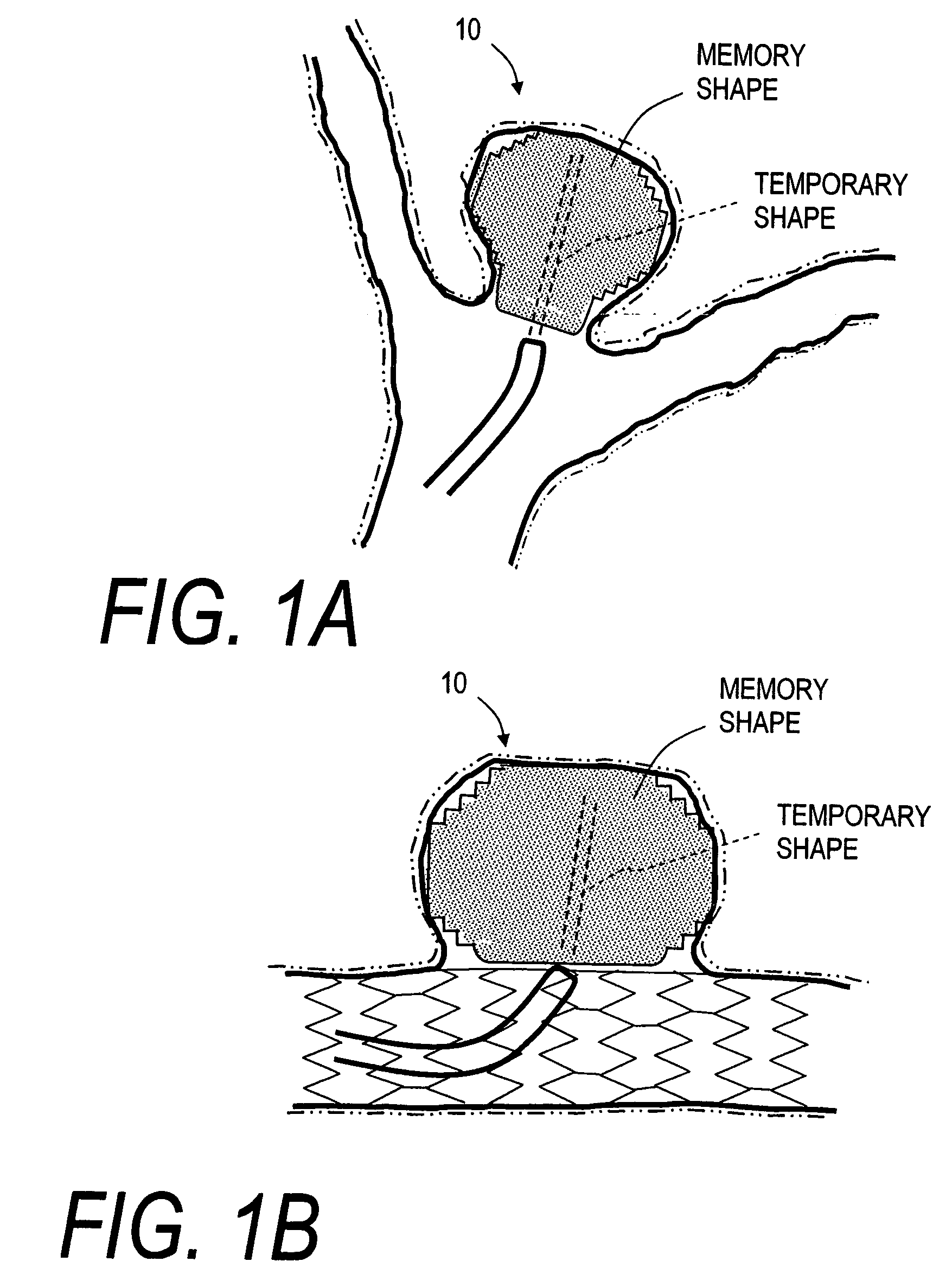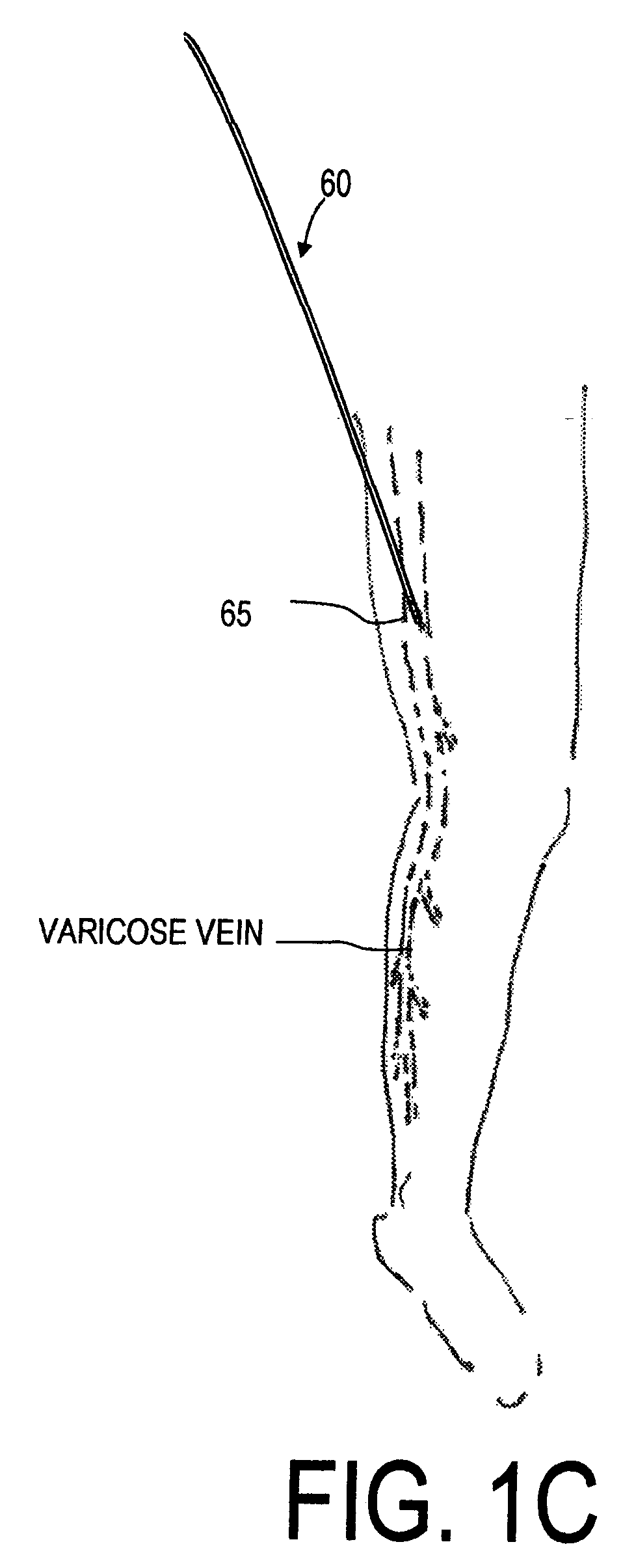Endovascular occlusion devices and methods of use
- Summary
- Abstract
- Description
- Claims
- Application Information
AI Technical Summary
Benefits of technology
Problems solved by technology
Method used
Image
Examples
Embodiment Construction
[0044]FIG. 1A illustrates the lumen of a common form of intracranial AVM usually described as a bifurcation aneurysm 5 that is often difficult to treat with embolic coils. The implant or stent corresponding to the invention comprises and open-cell or open-volume elastomeric shape memory polymer (SMP) monolith or body 10 that is capable of a “memory” extended or expanded shape as in FIG. 1A and is self-deployable from a “temporary” non-extended or compacted shape (phantom view). FIG. 2 illustrates a sectional view of an exemplary microfabricated elastomeric SMP body 10 in its memory “shape”, and FIG. 3 illustrates the stent 10 in its “temporary” equilibrium compacted shape.
[0045] In a preferred embodiment, the stent 10 of FIG. 1A has an open-cell elastomeric structure and is fabricated by soft lithography microfabrication means resulting in a open-cell structure 20 as depicted in FIG. 4A. An alternative method of making open-cell structure is by a polymer foaming process. The open-c...
PUM
 Login to View More
Login to View More Abstract
Description
Claims
Application Information
 Login to View More
Login to View More - R&D
- Intellectual Property
- Life Sciences
- Materials
- Tech Scout
- Unparalleled Data Quality
- Higher Quality Content
- 60% Fewer Hallucinations
Browse by: Latest US Patents, China's latest patents, Technical Efficacy Thesaurus, Application Domain, Technology Topic, Popular Technical Reports.
© 2025 PatSnap. All rights reserved.Legal|Privacy policy|Modern Slavery Act Transparency Statement|Sitemap|About US| Contact US: help@patsnap.com



